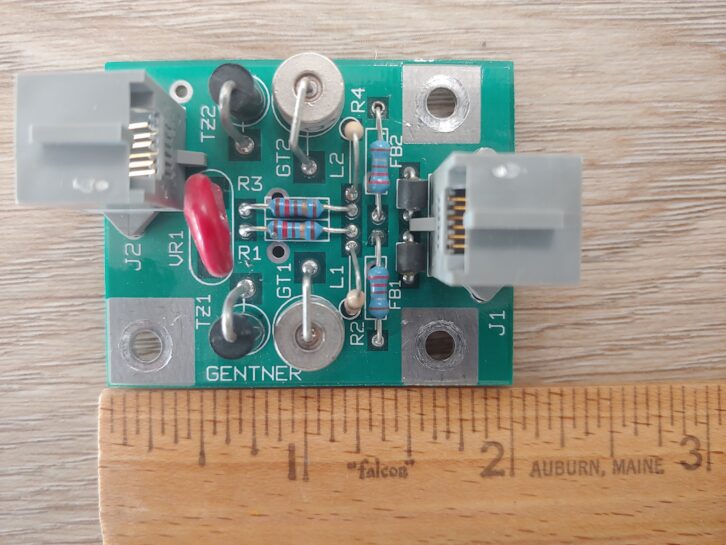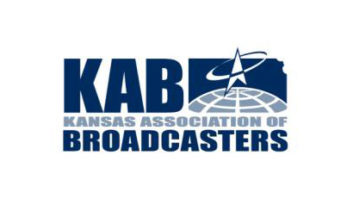Bill Traue is SBE certified (CSRE, 8-VSB and AMD) and the proprietor of Bill Traue Technical Services LLC in Idaho Fall, Idaho. From 1988 to 1991, he was a customer service engineer at Gentner Electronics, manufacturer of telephone interfaces and transmitter remote-control systems. Bill was brought in primarily because of his familiarity with the VRC-1000 remote control.

Bill installed one of the first VRC systems in 1986. It was later damaged by lightning. All of the VRC repairs that came into the factory were from damage related to phone lines, including surges and lightning. Because these were deemed acts of God, they were not covered under warranty.
Suggestions on how to prevent damage were always shared and welcome. One of Bill’s favorite tips was to take a full roll of telephone wire, either 500 or 1,000 feet, crimp connectors on each end of the roll and connect the full roll in series with the incoming phone line. The inductance of the wire and the distributed capacitance helped slow the incoming destructive impulse.
Unfortunately, the VRC1000/2000 motherboard has the telephone coupler circuit right in the middle of the board. Efforts to design something to protect the VRC from surges would have to be done outside the chassis.
Gentner Engineer Bill Gilman designed a small metal box that attached to the ground terminal on the rear of the chassis, right next to the phone line connector. Bill is pictured here holding one. Despite its labeling, it became known as an AGA-1 for Act of God Attenuator!
Inside the box was a circuit board with some series inductance, some shunt capacitance, gas discharge tubes and MOVs across the line and to ground, and some series resistors. These components were installed on both sides of the phone line to maintain balance.


The resistors, a pair of 2.2 ohm and a pair of 22 ohm, acted as fuses and would burn up if lightning came near the line.
After Gentner began shipping the AGA-1 with new VRC units and loaners, there were no more incidents of the mother boards being damaged by lightning surges.
And it was easy to repair the burned-out resistors, should they fail. Bill says Gentner even sold a repair kit, but if the customer didn’t have any low-value resistors to replace the fried ones, a short loop of solder wire could be used temporarily.
Another occasional problem with VRC installations was failure to auto-answer an incoming call. The temptation was to blame excess RFI on the line, but Bill discovered that the problem actually was caused by the nature of the ring detect circuit originally employed. The detect circuit could get saturated by the incoming voltage and current, and the individual 20 Hz ringing pulses were getting lost. To solve the problem, the company added a Zener diode, altered resistance values and deployed a more suitable opto-coupler.
Users of the older telephone-based remote controls know of their value for backup site access. We need to employ every trick in the book to prevent these useful relics from being damaged, given that factory repair is no longer available for them. Readers who still employ VRCs can contact Bill Traue at [email protected].
Label tips
Rolf Taylor is a principal in Rocket Engineering and Consulting. The first broadcast board he regularly used and maintained was an old Gates Dualux console that had been extensively modified for stereo operation. The board had been meticulously labelled with different colors of embossed Dymo tape. It really was a thing of beauty.
Nowadays, embossed labels are considered crude. The best thermal label technology is laminated with a clear top layer to avoid the letters wearing off. When you’re shopping for a new label maker, it’s worth checking on the availability of this type of label. Rolf says his ancient Brother P-Touch has the feature while his modern Dymo Pro unit does not.
Recently Rolf has run across labels that could benefit aesthetically from the advanced features that label makers now offer. For example, if you are labeling a patch field, there’s a mode that allows you to create a horizontally oriented strip of labels that are equally spaced. (Dymo calls it “Module Mode.”) Similarly there’s a “Breaker Mode” meant for a vertical strip.

One limitation of this feature is that it uses tenths of inches to specify the width of labels. This rarely corresponds perfectly to the usual dimensions. You can see this “slip” of the words on the photo of Rolf’s receiver in the accompanying photo.
Next time Rolf creates one of the breaker or module labels, he intends to use metric measure. Even if each label slips by 1 mm, that’s not much even over the width of several labels. Rolf says most modern label makers have this feature and he recommends it.
Don’t suppress your tips! Workbench submissions are encouraged and qualify for SBE recertification credit. Email [email protected].












